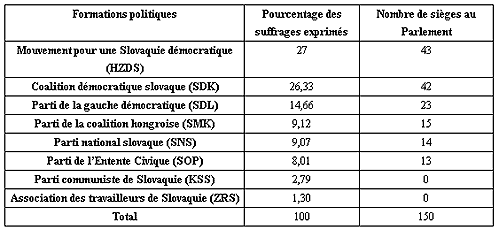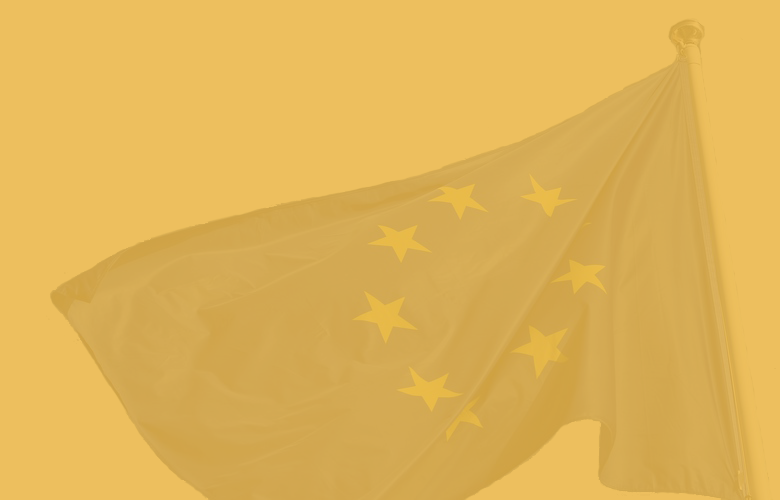News
Corinne Deloy,
Fondation Robert Schuman,
Helen Levy
-

Available versions :
EN

Corinne Deloy
Fondation Robert Schuman
Helen Levy
From 1993 to 1998 Slovakia was governed by Vladimir Meciar, the populist leader who was unpopular amongst Western countries. For a long time Slovakia was also the bad boy in the group of ex-communist countries of Eastern Europe on the road to democracy. For the past four years the country has been under the rule of Prime Minister Mikulas Dzurinda, but it suffered greatly due to its international isolation and now wants to succeed in integrating both Europe and NATO.
Visiting Bratislava in May, Günther Verheugen, European Commissioner for Enlargement said: "Not only has Slovakia caught up with the other candidates who started negotiations much earlier on, it now finds itself amongst the countries leading the way to integration". He probably thought however that Slovak progress had only been made possible thanks to "the immense international confidence" granted to Mikulas Dzurinda's government and to President Rudolf Schuster since he intimated, without naming the former Prime Minister Vladimir Meciar, that a vote in the wrong direction during the general election might "threaten Slovakia's ambitions to join the EU". Indeed two months after the Slovak elections the Prague Summit is due to take place to decide on whether Slovakia (and other countries) will integrate NATO followed closely by the EU's decision in December on the first wave of countries to join the 15 by 2004.
Hence the general election on 20th and 21st September in Slovakia will take place under close international observation.
The Slovak Political System
Every four years the Slovaks elect 150 representatives to the Republic's National Council, the only house in their national parliament. The election is proportional and takes place in one round, since the country comprises one and the same constituency. In order to be a candidate all parties or movements have to make a declaration to confirm they have at least 10,000 members. However if numbers are lower than 10,000 a party may hand over a petition of support containing a number of signatures enabling it to attain this figure. In order to be represented on the National Council a party has to achieve a minimum 5% of the votes cast and a coalition of two or three parties at least 7% (10% if it unites four movements or more).
The National Council enjoys major power: it approves the composition of the Government and may reject some of its members or even the entire government. It also elects three of the country's judges.
Six movements are represented in the present National Council of the Republic of Slovakia:
- the Movement for Democratic Slovakia (HZDS), the main party led by Vladimir Meciar.
- The Democratic Slovak Coalition (SDK), originally a coalition of the various democratic political forces opposing Vladimir Meciar whose constitution in part was caused by the new electoral law. The five parties comprising this coalition are the Christian Democrat Movement (KDH), lying to the right on the political scale; the Democratic Union (DU), a centre right group; the Slovak Social Democrat Party (SDSS), lying to the left ; the Democratic Party (DS), conservative and liberal and the Slovak Green Party (SZS), a centre left group.
- Democratic Left Party (SDL), social democrat group,
- The Hungarian Coalition Party (SMK), comprising three democratic Hungarian parties,
- The National Slovak Party (SNS), an extreme right wing nationalist movement,
- The Civic Harmony Party (SOP), created by Rudolf Schuster, President of the Slovak Republic since May 1999 and lying to the centre on the political scale.
The Election Stakes
Apart from integrating the EU and NATO, the development and stabilising of democracy comprise the other main stake in the Slovak general elections this month. It is still difficult to place the various national political groups on a left-right axis. Religious, ethnic, economic and even old institutional (separatism-federalism) differences dating back to the era of Czechoslovakia are still as relevant today. The political parties are not firmly established amongst the electorate and the partisan system is particularly unstable.
New movements emerge just before each election (the ZRS –the Slovak Workers Association – just before the 1994 elections, the SDK –the Democratic Slovak Coalition - in 1998 and even the SOP –the Party for Civil Harmony- before the presidential elections of 1999) make it even harder for voters to identify with the parties. Two new movements have thus been created over the last few years, the SMER (which means « Direction ») lying rather to the Left (but which joined forces with Vladimir Meciar's party during the regional elections of December 2001) and that was created by Robert Fico a former member of the Democratic Left Party (SDL), and which is the second most important party in the country today according to the polls. Then there is the ANO (New Citizens' Alliance) created by Pavol Rusko, owner of the leading private TV station.
However Vladimir Meciar's HZDS (Movement for Democratic Slovakia) is still the most stable political group enjoying the consistent support of around a third of the electorate and, according to the polls, winning the greatest number of intentions to vote at present. The HZDS easily came out on top during the first regional elections since independence, held in December last, asserting itself in five of the eight regions during the first round (election of the 401 regional council members) and taking 6 of the 7 governor's positions (president of the regional council) during the second round; the government coalition (ex-SDK that turned into the SDKU, Democratic and Christian Slovak Union) only won one. Participation was extremely weak (26% during the first round and 22.61% during the second), and makes any forecast difficult.
Three weeks from the election three political group can be identified on the Slovak political scene. The first, leading all polls, is Vladimir Meciar's HZDS, the second being the Prime Minister Mikulas Dzurinda's SDKU. Finally the latest grouping of new parties (SMER and ANO).
2,761 candidates representing 26 parties and political groups, only around 10 of which have any chance of reaching the eligibility threshold, will be fighting it out for the vote of some four million Slovak voters on September 20th and 21st. All of the groups together, (including Vladimir Meciar's party who recently withdrew from his anti-European stance and who is in favour of Brussels today) say their main aim is to see Slovakia enter the EU; this is also desired by a great majority of the population (81% according to the most recent polls). It is therefore difficult to say what will make the difference amongst the Slovak voters.
Summary of the general election results on 25th and 26th September 1998:
Participation rate : 83,5%
 Source Slovak Embassy in Paris
Source Slovak Embassy in ParisOn the same theme
To go further
Elections in Europe
Corinne Deloy
—
25 February 2025
Elections in Europe
Corinne Deloy
—
18 February 2025
Elections in Europe
Corinne Deloy
—
28 January 2025
Elections in Europe
Corinne Deloy
—
14 January 2025

The Letter
Schuman
European news of the week
Unique in its genre, with its 200,000 subscribers and its editions in 6 languages (French, English, German, Spanish, Polish and Ukrainian), it has brought to you, for 15 years, a summary of European news, more needed now than ever
Versions :



